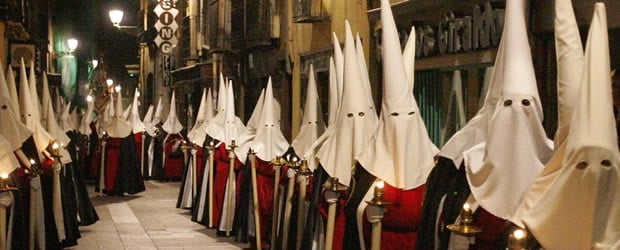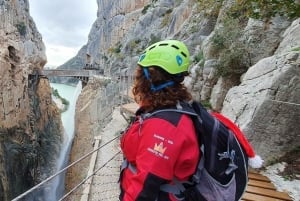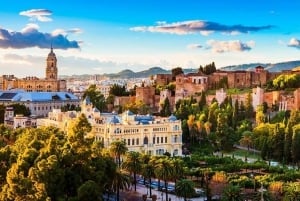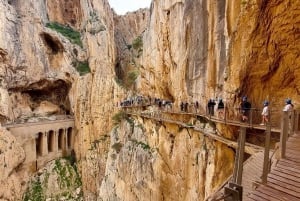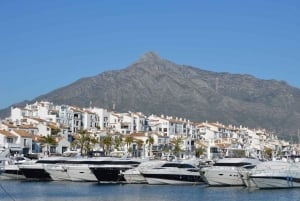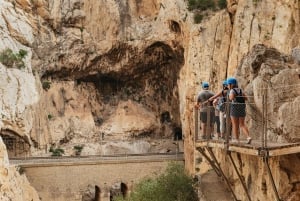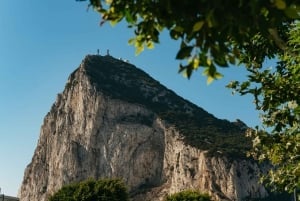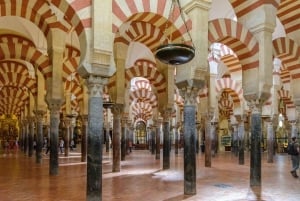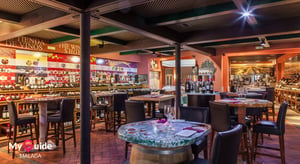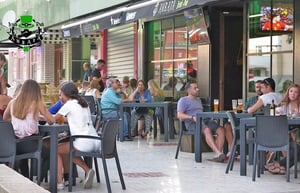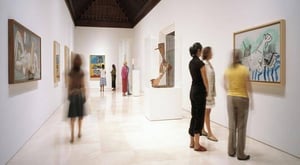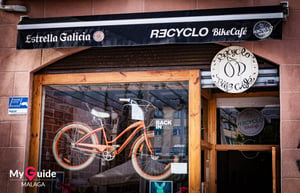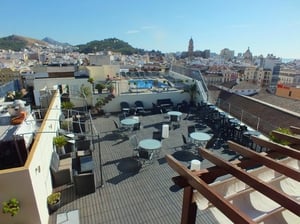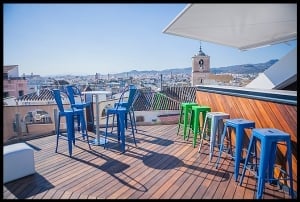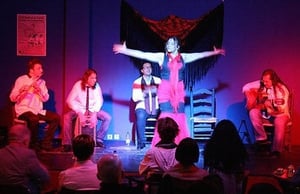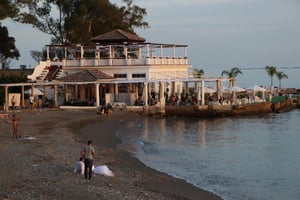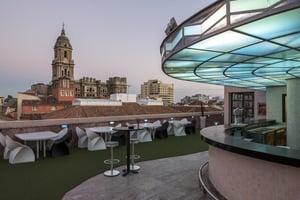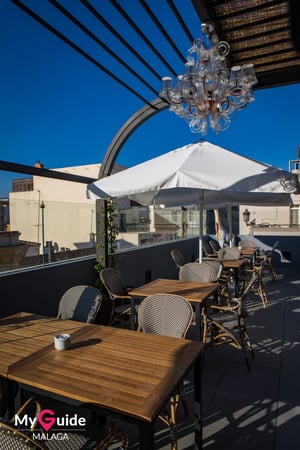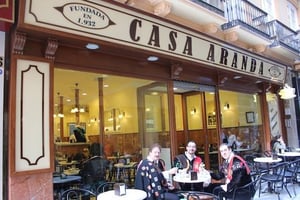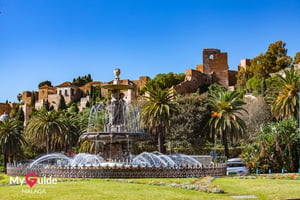Semana Santa, where did it come from and what's it all about?
From medieval flagellating monks to the 21st century.
Book Top Experiences and Tours in Malaga:
If youʻre booking your trip to Malaga last minute, we have you covered. Below are some of the top tours and experiences!- WeWhale
- Caminito del Rey Guided Tour & Welcome Pack from Málaga
- Málaga: Cathedral, Alcazaba, Roman Theater Walking Tour
- From Málaga: Caminito del Rey Guided Day Trip
- From Malaga or Costa del Sol: Mijas, Marbella & Puerto Banus
Spain is a Catholic country, but largely secular, with a low birthrate and unspectacular church attendance figures. And yet each year at Easter it witnesses an explosion of seeming religious fervour, with mass participation, extravagance and an impact on every aspect of life. Seville, Málaga, Granada and other towns go into virtual shut down as the streets are rammed with people and processions from morning to the early hours. Restaurants and bars do their best business of the year, and all other normal businesses are definitely relegated to insignificance. To the outsider, it is astounding how a religious festival can so dominate a town, for so many days, so completely.
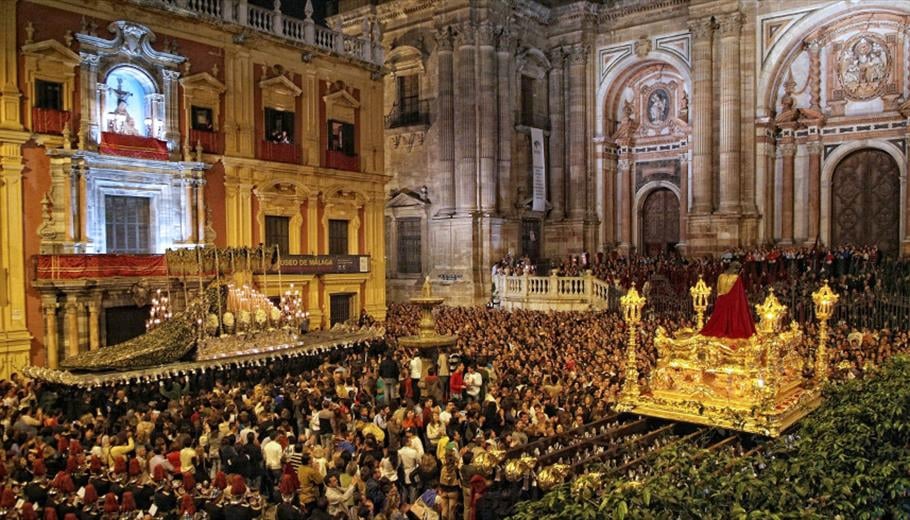
So what's going on?
Assuming you aren't Spanish, and probably not even a Catholic, it goes something like this. Semana Santa or Holy Week is all about the celebration of the seven days that took Jesus of Nazareth from his triumphal entrance on Palm Sunday into Jerusalem, to his public execution on the Friday, and his miraculous resurrection and disappearance on the Sunday. This whole sequence of events is celebrated in the Catholic Church as the Christ's Passion. It features his agony in the gardens of Gethsemane knowing as he does, the fate that awaits him, and the last supper with his comrades where he enshrines the Eucharist, the core of Catholic ritual. And then his trial and execution by being nailed to a wooden cross. It's dramatic stuff for sure, even from an unbeliever's perspective. The church has always paid respect to this history through a series of masses and rituals that have evolved over centuries. One of the very potent rituals that evolved was the 'stations of the cross', the 'via crucis'. This sequence of 14 events, is supposedly based on the real passage of Jesus' route to Calvary through the streets of Jerusalem. Catholics everywhere still parade and venerate fourteen different images of this journey to execution, whether it is in the parish church, or, as in many Spanish towns, the icons are scattered around the town itself. A Semana Santa procession venerates these stages, it carries the floats with the images of the crucifixion and the celebration of the virgin mother, and its participants walk solemnly, sometimes ceremonially whipping themselves, for hours and hours. The 'costaleros' carrying the floats labour in excruciating physical exertion. To process is to suffer, to do penitence for one's sins, and it is in this action, of penitence, that the whole cult has its origins.What is extraordinary is that from a humble beginning of monks flagellating themselves in public in the 1300's, Semana Santa evolved a vast mini-society and multi-million euro business, and a cultural phenomenon by which millions of Spaniards define themselves.
The journey from monks whipping themselves into a bloodied frenzy to what you see now was long and gradual. It has been moulded by wars, pestilence and famine and shaped by the vast riches raped from the South American indigenous peoples, and by political upheavals, both secular and religious. The practice of flagellation, whipping oneself to purify the spirit and atone for sins was widespread among monastic orders in medieval times. It spread steadily to the laity as well, where brotherhoods of penitents were formed among the craft guilds. In the early 1400's Franciscan monks took to processing through the streets of Seville flagellating themselves during holy week in penance. The cult of the 'way of the cross' was imported by crusaders returning from the Holy Land. This was officially enshrined by the Marques of Tarifa on his return from Jerusalem in 1521. This made processions at holy week standard practice in the church. Already the Franciscan monks had been granted permission by the church to form a brotherhood of flagellants in 1448, known as the Santa Vera de la Cruz in Seville, the first recorded brotherhood or 'Hermandad'. The first such Hermandad in Málaga was approved in 1487, a proactive step to re-catholicize the town only recently recovered from Muslim domination. Seville had been reconquered nearly two hundred years earlier. So by the early 1500's flagellating processions of penitents were well institutionalised by the Church. There follows now a period of expansion where the laity, the common people, take to forming brotherhoods (Cofradias) to process in mask, with the crosses of fire. They are formed from guilds, neighbourhood groups and merchants companies. Spain was enjoying an economic boom from the New World, and its port of entry was Seville. Churches become decorated in Latin gold and silver. Processions of course are not a Christian invention, but a throwback to the pagan cults that would have dominated much of Europe, and especially to the Roman occupation. As bullfighting is an echo of Roman amphitheatres and blood sports, so religious processions are an echo of their pagan forebears. The pennants and banners of the Cofradias are remarkably similar to those of Roman culture. The cult of these processions grew quickly among the people, to the point where the church is struggled to regulate and control the activity, and its financial implications. The laity spending money on such things, denying the actual church that income is something that didn't sit easily. The very fact that the lay Cofradias were owned, run and paid for by the people and not the church was an implicit challenge to its authority. Indeed the paganistic elements of these processions were alive and well, with public disorder, immorality and revelry common. What started as a concession to some monks wanting to whip themselves in public was constantly threatening to get out of hand. By 1604 the church decided to completely order and control the practice, licencing the 'Cofradias' of lay people, with specifically controlled hours and routes. The evolution of the practice in Málaga is less clear, due to the huge loss of documents and evidence in the various social upheavals of the 19th and 20th century.
The 1600's and 1700's are a constant battle by the church to contain a practice that keeps threatening to become a carnival of excess and opulent display. Seville society at this time is immensely wealthy and the Cofradias represent not the monastic orders or the church but the affluent secular groups of merchants and tradesmen, keen to show their religious affiliation, but also their social standing. The practice of processing masked had long been contentious, as the anonymity granted always has the potential for riotous and immoral behaviour. There are constant ecclesiastical edicts trying to contain the excesses of the Cofradias, to determine who can cover their heads and dress as Nazarenes with hoods. Such was the problem that in 1783 the church banned outright the guild based Cofradias, allowing only religious orders to continue. This doesn't last long and by the beginning of the 1800's the practice is again widespread.
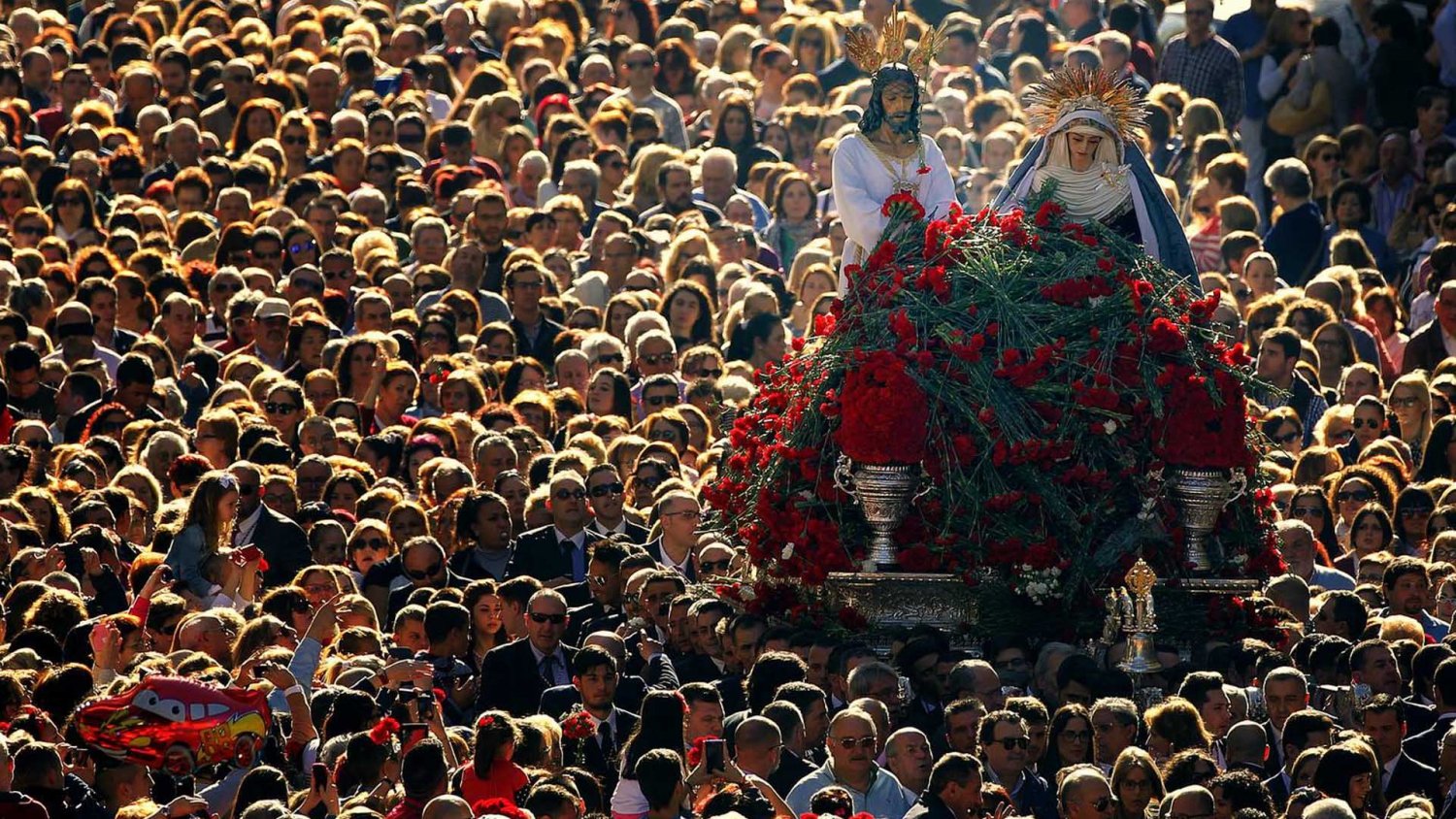
The 19th century however witnessed a huge decline in the practice due to a series of plagues, famines, environmental disasters like the phylloxera fungus, the Napoleonic Wars, and political upheaval where church property is frequently attacked and looted. Cofradias rely after all on the willingness of the participants to pay for it. By the late 19th century the practice is revived increasingly as wealth trickles back and Spain stabilises, only for it to be thrown into upheaval again by the civil war. In Málaga, due to the terrible costs of the wars and the phylloxera tragedy, the Cofradias are all but extinct and have to be resurrected in 1921 by order of the local government in the Agrupación de Cofradias de Semana Santa de Málaga, by which they are still governed today. The promotion of them is taken up by Franco after his victory in the civil war as an expression of Catholic hegemony. After all, Málaga was on the atheistic socialist losing side, and had seen vicious anti-ecclesiastical riots in 1931. The Cofradias today in Seville and in Málaga are quite different. Those of Seville have a longer more continuous history, and have evolved more gradually, numbering 60 to Málaga's 41 official cofradias. Those of Málaga are later in style and form. Many of them feature participation from military and police units, a throwback to the militarisation of some of them under Franco. Málaga's churches banned many of the 'tronos', the floats, as they were in conflict with many of the Cofradias, so Málaga's Cofradias are often in separate buildings built specially to accommodate the much bigger floats. Seville floats are compact and fit neatly into its many medieval churches, many of which feature remnants of the mosque they replaced. Malaga's floats are enormous as they are carried on the shoulder by upwards of fifty or sixty people and more, not hidden underneath.

What you are seeing at one of these processions is not simply an act of devotion and faith. You are seeing an expression of a bizarre kind of dialectic, where religious devotion, expression and heritage have evolved in tandem with forces of local community self-expression and identity, with their concomitant impulses of hedonism, anti-establishmentarianism and an almost idolatrous fascination with the ritual and iconography of the actual processions. Just as modern Spain is a stable affluent democracy, the world of the Cofradias today is thriving and stable. They have a cohabitation with the church free of the tensions and battles of the previous centuries. Indeed, the church must be grateful for this huge and ostentatious advert for its beliefs. One doesn't imagine that the millions of people lining Andalucian streets each Easter are all devout. Only 18% of Spaniards admit to being practising Catholics. The Cofradias, however, are as much about being part of a community, especially in Seville where for centuries they have been drawn from each neighbourhood. They have evolved their own traditions and stories, and have their own specific identity in terms of decoration, costume, and tronos, and have survived despite the ravages of time and ecclesiastical opposition. Today, it is a happy and profitable cohabitation. The re-emergence and revitalisation of Cofradias in the twentieth century is due largely to the stability of Spain and a renewed interest in creating an identity that is uniquely Spanish. To be in a Cofradia is to join a society of like minds, to bear witness to one's faith, and to share in the social status that attaches to them in different ways.
The penitential element that started the practice really only survives in the arduousness of the carrying of the heavy tronos for up to eight hours or more. There are many solemn moments of prayer on each route, with its stations of Christ's passion, but all around there is drinking and eating and a decidedly party atmosphere. Tourists and locals alike, in their many millions, crowd out towns and villages all over Spain. The impact on the economy cannot be underestimated either. Each Cofradia in Málaga spends many tens of thousands of euros to maintain the costumes and to pay the services of soldiers and policemen to carry the tronos. In 2017, the University of Málaga calculated the economic impact at over eighty million Euros in Málaga city, and the full economic value was close to 240 million overall. Occasionally lone voices protest at this extravagance, noting that for example Seville town hall will spend over five million on managing the activities, at the same time as other cuts to services and jobs go ahead. A Málaga cleric once questioned the morality of spending millions on such ostentation when people in Spain go without food and lose homes in the financial crisis. But these criticisms are lost in the din of trumpets and fug of candle smoke and incense, as Semana Santa is simply too big a tradition, too much part of the Andalucian identity, to be eroded by competing Christian or political perspectives. Throughout its history it has not been overly concerned with penance and sacrifice, being as it is a strange and unique symbiosis of faith, ostentation, hedonism, identity and social glue.
It's an intimate experience being packed into a narrow medieval street under the glow of candles, with hooded figures and the solemn swaying tronos, and cries of adoration and celebration from the locals. There truly really is nothing else quite like it.


